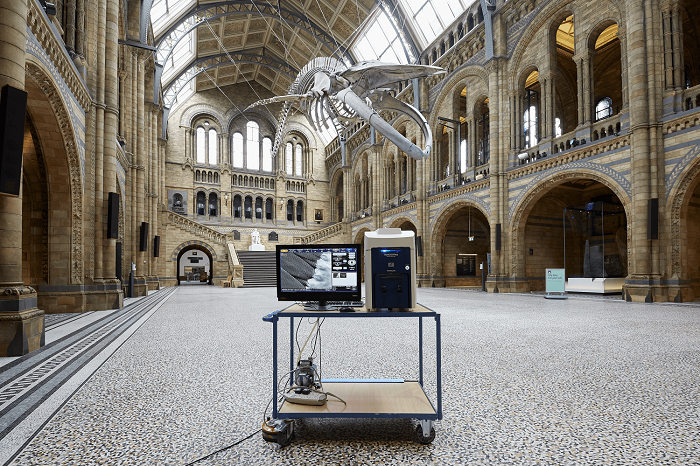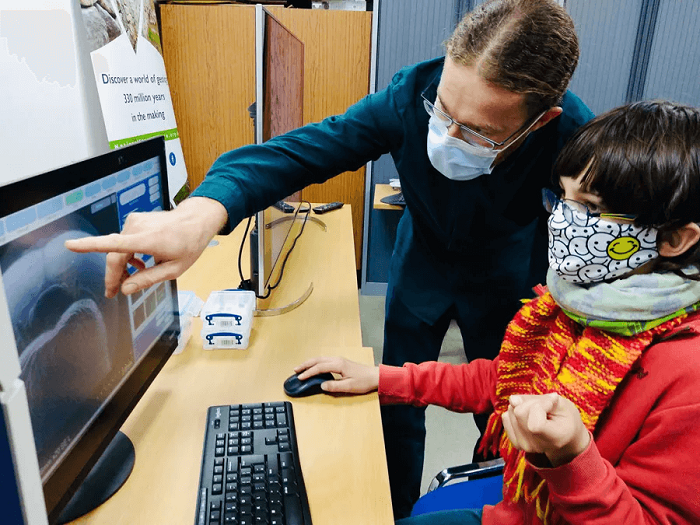STEM (science, technology, engineering, and maths) outreach has always been something I have been passionate about, engaging and inspiring a diverse range of people who would not normally have access to the tools and resources that those of us working in STEM areas use in our daily lives. STEM outreach can take many forms, from involving the public directly in research projects via crowdsourcing science, disseminating information via public events, through to encouraging people to consider STEM subjects as a future career.
An Excellent Intro to STEM
Microscopy is an excellent tool to get people involved in STEM and I am very proud to be part of an outreach project in the UK taking high end electron microscopy equipment to schools, museums, and events throughout the year. It is a project initiated and run by Dr. Alex Ball (Natural History Museum) and Dr. James Perkins (Queen Elizabeth’s Grammar School), along with several organisations as collaborative partners, including Oxford Instruments NanoAnalysis. The goals of the project include using portable electron microscopes to demonstrate the use and benefits of scanning electron microscopy (SEM), enrich school curriculums, upskill teachers, and connect researchers with their local communities. There are two microscopes involved (called Mulder and Scully). NanoAnalysis donated two Xplore EDS detectors to the project along with our AZtecLiveOne software, which needs no advanced knowledge to obtain results quickly and is ideal for a this type of use.

A Resounding Outreach Success
The project started off as a pilot scheme and was subsequently extended due to demand, now approaching the end of its second school year (the first year was during pandemic lockdowns). It has been a resounding success so far, with state, academy, grammar, and private schools across the UK being involved. Twenty six schools have hosted the SEMs and a further 50 schools used them remotely. Around 7500 students have had access to one of the microscopes and 2500 students are classed as independent users. Over 800 school research projects have been conducted on the SEMs, covering a wide variety of subjects, including comparative studies of insects, analysis of antique coins, and the structure of different metals. The impact of this project is even greater when the number of users at museums and events the microscopes have also visited in the school holidays are included.
Notable Individual Projects
While the numbers are impressive, what is particularly rewarding is the impact these outreach microscopes have had on individuals. Students have changed their studies to STEM subjects as a direct result of getting access to the microscopes. Other students have been able to showcase their projects at events such as the Big Bang fair. The winner of the 2022 UK Young Scientist Award used one of the microscopes to study differences in feather structure between bird species with the title “Why can’t some birds fly?”. And it is not only students that have benefited. One hundred and fourteen teachers have now been trained to use the SEMs, a Ph.D. student was able to the one of the SEMs as part of their research, one technician has enrolled on the Royal Microscopical Society diploma course, and another has used the SEM as part of their apprenticeship.

Into The Future
The project has had fantastic positive feedback from all who have taken part. The level of engagement from the students, teachers and technical staff proves just how exciting and important this has been. The feedback highlights how projects such as this can help to break down the barriers to STEM, giving the participants a new set of skills and the ability to think more analytically, as well as an insight to just how exciting science can be. I am proud that NanoAnalysis are involved, and I look forward to seeing the ongoing success of this project over the coming few years.
Click here for more information about Oxford Instrument’s commitment to sustainability.



